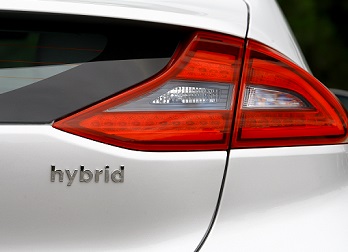Hybrid Vehicles are an Effective Pathway to Full Electrification
Mr. Krishan Dhawan, December 14, 2017
Under the recently announced GST guidelines, the Government made clear what it thought about hybrid cars, which will attract 28% GST plus 15% cess, as against 28% for ICE vehicles and 12% for electric vehicles. At this punitive tax rate, there will be no sales of hybrids. Current buyers will go for a corresponding ICE model, which attracts 15% less tax. The only manufacturer of hybrids at scale (Toyota) has stopped the production of its current model, and shelved plans for the introduction of additional models. Other manufacturers, with plans to introduce hybrids, have also suspended their plans. As India seeks to implement its ambitious program to transition to full electric mobility by 2030, it will be worthwhile to recognize and protect the advantages inherent in the current available hybrid technology as a stepping stone to full electric mobility.
One must recognize that lot of work needs to be done to get to full electrification. First, the Government needs to decide which arm will take the lead on implementation (NITI Aayog, Ministry of Ministry of Road Transport and Highways or Ministry of Power). Secondly, the technology pathway needs to be nailed down. Currently there is debate around whether to go for battery replacement or battery charging. This is a crucial decision which needs to be made as soon as possible so that follow on work can start. While 2030 is an ambitious timeline by any standards, the lack of coherence on the above points make attainment of the 2030 goal more challenging. It also increases the time during which an operating hybrid fleet can contribute to ongoing reductions in fuel consumption and emission.
As presented in the December 2016 International Council on Clean Transportation study Hybrid and Electric Vehicles in India Current Scenario, the table below shows that (strong) hybrid automobiles can reduce fuel consumption by 32%. While this is less than a complete solution, it still does represent a material and immediate reduction of fuel consumption by automobiles. Why not allow real fuel savings of 1/3 over the years that it will take to fully replace the car fleet by EVs?
Fuel Consumption Savings of Models Under FAME Scheme Compared with Base Models
| Technology | Hybrid/Electric Model (BEE Fuel Efficiency Star Rating) | Non-Hybrid/Non-Electric Base Model (BEE Fuel Efficiency Star Rating) | Gasoline Equivalent Fuel Consumption Reduction over Base Model |
| Diesel-Based Mild Hybrid | Maruti Ciaz VDI SHVS (5-Star) | Maruti Ciaz VDI (5-Star) | 7% |
| Diesel-Based Mild Hybrid | Maruti Ertiga VDI SHVS (5-Star) | Maruti Ertiga VDI (4-Star) | 15% |
| Gasoline-Based Strong Hybrid | Toyota Camry Hybrid (5-Star) | Toyota Camry AT 2.5 L (2-Star) | 32% |
| Battery Operated Electric | Mahindra E-Verito D2 (5-Star) | Mahindra Verito D2 (4-Star) 68% | 68% |
Note: The “mild hybrid” product characterization is unique to India, and is not part of this paper’s recommendations, which is confined to “strong hybrids”, where there is a material reduction in fuel consumption.
The key points that need to be kept in mind are:
- the technology for hybrid vehicles is present and available in India now, and not at some indeterminate time in the future
- there is no need to build out a charging infrastructure and elaborate supply chain to support this class of vehicles
While the complete replacement of internal combustion engines is laudable and highly beneficial, hybrids offer the opportunity to immediately start realizing benefits from the reduction in fuel consumption until the EV manufacturing and charging infrastructure is built out, which will take several years. Hybrids represent a gateway technology that can lead to plug-in hybrids and on to fully electrified vehicles.
In recognition of this reality, consumers in many countries are incentivized to purchase hybrids, resulting in realizing material fuel consumption benefits.
This represents a lost opportunity to reduce fuel consumption from the car fleet in real time. Allowing hybrids to be manufactured and sold will not in any way diminish efforts to introduce full electric vehicles at a future date. On the contrary, it will help raise consumer awareness and modify fuel consumption patterns without the risks and costs in needing to have access to electricity to recharge vehicle batteries and without the driving range limitations inherent in a battery-only operated car.
Policy makers are encouraged to re-examine the duty structure on hybrids and put in place one that promotes, rather than penalizes, hybrid manufacture and use.
